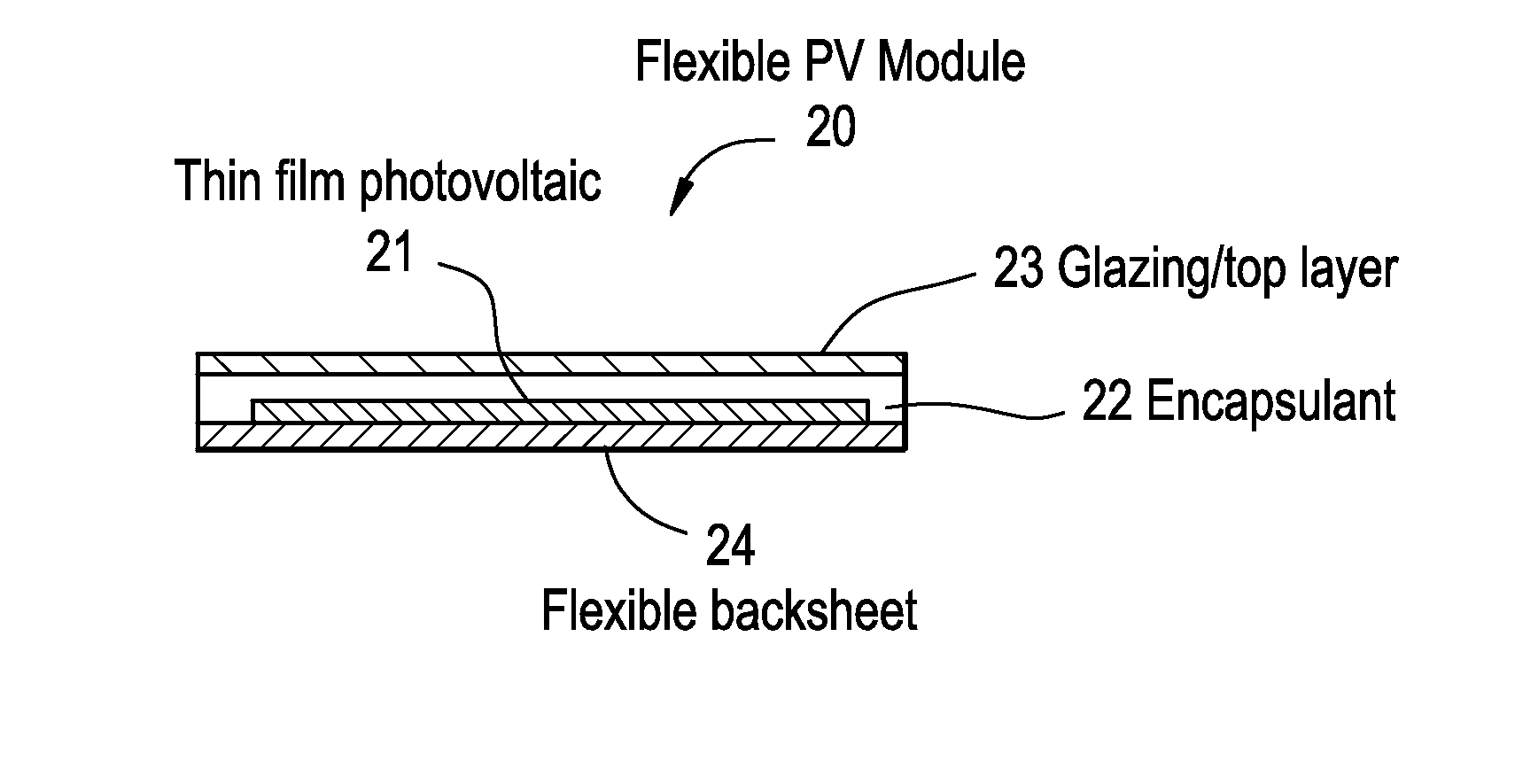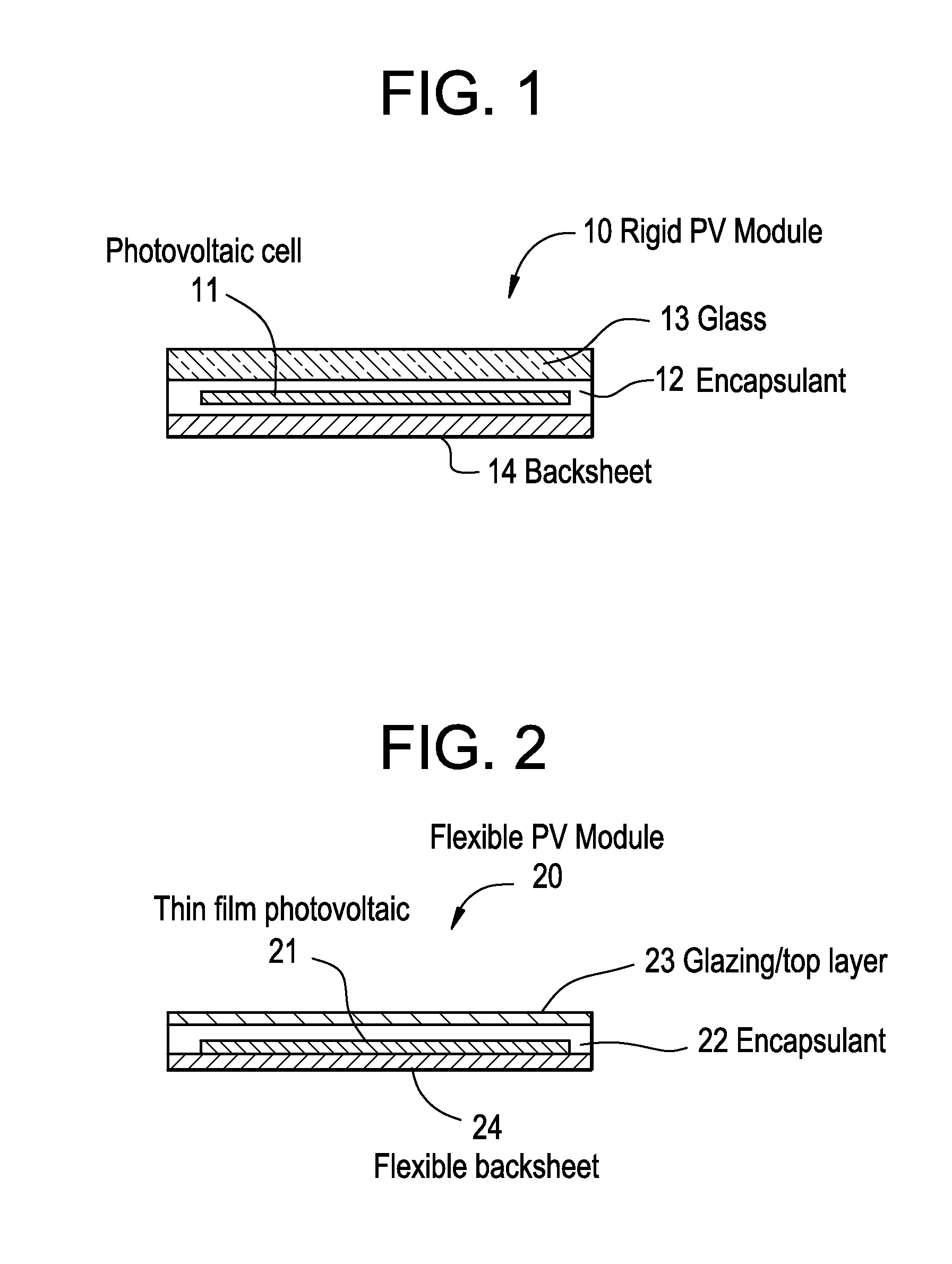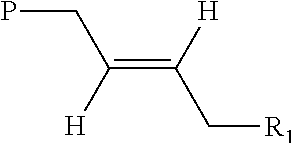Electronic Device Module Comprising Film of Homogeneous Polyolefin Copolymer and Grafted Silane
a technology of homogenous polyolefin and electrolyte, which is applied in the direction of basic electric elements, layered products, chemical instruments and processes, etc., can solve the problems of less than ideal pv cell encapsulating film material, greater than 30% loss in power output of solar modules, and eva resins that absorb moisture and other issues, to achieve the effect of good adhesion to glass, faster production rate, and higher processing temperatur
- Summary
- Abstract
- Description
- Claims
- Application Information
AI Technical Summary
Benefits of technology
Problems solved by technology
Method used
Image
Examples
examples
[0162]All raw materials (ethylene, 1-octene) and the process solvent (a narrow boiling range high-purity isoparaffinic solvent trademarked Isopar E and commercially available from Exxon Mobil Corporation) are purified with molecular sieves before introduction into the reaction environment. Hydrogen is supplied in pressurized cylinders as a high purity grade and is not further purified. The reactor monomer feed (ethylene) stream is pressurized via mechanical compressor to above reaction pressure at 525 psig. The solvent and comonomer (1-octene) feed is pressurized via mechanical positive displacement pump to above reaction pressure at 525 psig. The individual catalyst components are manually batch diluted to specified component concentrations with purified solvent (Isopar E) and pressured to above reaction pressure at 525 psig. All reaction feed flows are measured with mass flow meters and independently controlled with computer automated valve control systems.
[0163]The continuous sol...
specific embodiments
[0169]The following prophetic examples 5 and 6 further illustrate the invention. Unless otherwise indicated, all parts and percentages are by weight.
example 5
[0170]A monolayer 15 mil thick protective film is made from a composition comprising 97 wt % of Sample 1, 3 wt % of vinyl silane, 1.5 wt % of Lupersol® 101, 0.8 wt % of tri-allyl cyanurate, 0.1 wt % of Chimassorb® 944, 0.2 wt % of Naugard® P, and 0.3 wt % of Cyasorb® UV 531. The melt temperature during film formation is kept below about 120° C. to avoid premature crosslinking of the film during extrusion. This film is then used to prepare a solar cell module. One film layer is laminated at a temperature of about 150° C. to a superstrate, e.g., a glass cover sheet, and the front surface of a solar cell, and a second layer then to the back surface of the solar cell and a backskin material, e.g., another glass cover sheet or any other substrate. The protective film is then subjected to conditions that will ensure that the film is substantially crosslinked.
Formulations and Processing Procedures:
[0171]Step 1: Use ZSK-30 extruder with Adhere Screw to compound resin and additive package.
[0...
PUM
| Property | Measurement | Unit |
|---|---|---|
| density | aaaaa | aaaaa |
| temperature | aaaaa | aaaaa |
| temperature | aaaaa | aaaaa |
Abstract
Description
Claims
Application Information
 Login to View More
Login to View More - R&D
- Intellectual Property
- Life Sciences
- Materials
- Tech Scout
- Unparalleled Data Quality
- Higher Quality Content
- 60% Fewer Hallucinations
Browse by: Latest US Patents, China's latest patents, Technical Efficacy Thesaurus, Application Domain, Technology Topic, Popular Technical Reports.
© 2025 PatSnap. All rights reserved.Legal|Privacy policy|Modern Slavery Act Transparency Statement|Sitemap|About US| Contact US: help@patsnap.com



